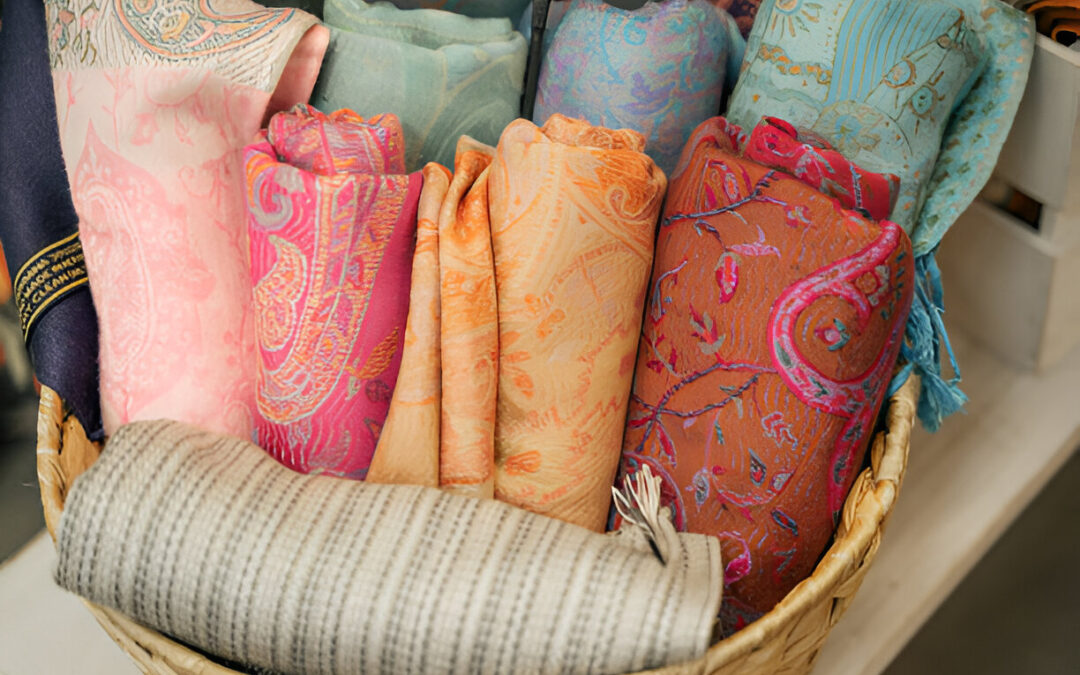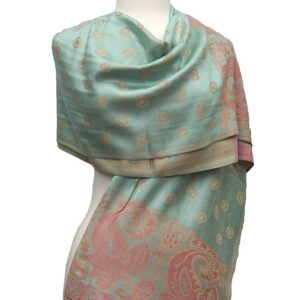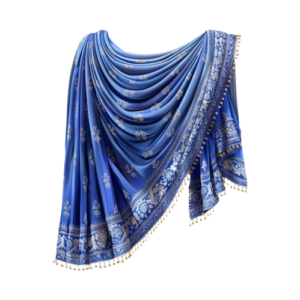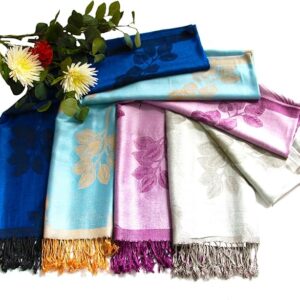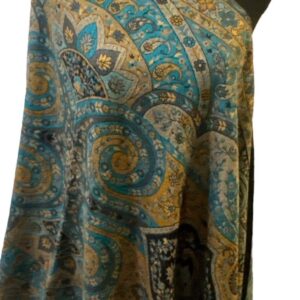The allure of pashmina is undeniable. Its softness, warmth, and elegance have made it a coveted luxury item for centuries. But have you ever wondered about the journey that transforms the raw wool from Kashmir goats into a sumptuous wrap that graces runways and wardrobes around the world? Join us as we explore the remarkable journey of pashmina, from its origins in the high Himalayas to its place as a symbol of luxury and sophistication.
1. The Origins: The Kashmir Goat
The story of pashmina begins in the remote and rugged terrains of the Himalayas, particularly in the region of Kashmir. Here, the Changthangi goat, also known as the Pashmina goat, thrives in the harsh climate. These goats are specially adapted to withstand the extreme cold of high altitudes, where temperatures can plummet to below freezing.
During the winter months, these goats develop a fine, insulating undercoat made up of soft, downy fibers. This undercoat is known for its incredible softness and lightweight warmth, making it the perfect material for creating luxurious textiles. The term “pashmina” itself is derived from the Persian word “pashm,” meaning wool.
2. The Harvest: A Delicate Process
The first step in creating a pashmina involves the careful collection of the wool. In spring, when the goats naturally shed their undercoat, herders collect the wool through a gentle combing process. This is done by hand to ensure that only the finest and softest fibers are gathered. Each goat produces a small amount of wool, making the process both labor-intensive and selective.
Once collected, the wool is cleaned to remove any impurities and sorted based on quality. The finest fibers are then set aside for spinning and weaving, while coarser fibers are used for other purposes.
3. The Spinning: Crafting the Yarn
The cleaned wool is then spun into yarn. This step is crucial in determining the texture and quality of the final product. Skilled artisans spin the wool by hand, ensuring that the yarn is consistent in thickness and smooth in texture.
Traditional spinning techniques preserve the natural softness and insulating properties of the wool. The spinning process requires great skill and patience, as the artisan must carefully control the tension and twist of the yarn to achieve the desired result.
4. The Weaving: Creating The Fabric
Once spun, the pashmina yarn is woven into fabric. This is where the true artistry of pashmina making comes into play. The weaving process is often done on traditional hand looms, which allow for intricate and precise patterns.
Weavers in Kashmir use various techniques to create beautiful designs and motifs. These patterns are inspired by nature, traditional art, and local culture. The weaving process can be time-consuming, with some shawls taking several weeks to complete, depending on the complexity of the design.

5. The Dyeing: Adding Color
After weaving, the pashmina fabric is dyed to achieve its final color. Traditionally, natural dyes are used to impart rich and vibrant hues. These dyes are derived from plants, minerals, and insects, ensuring that the colors are both deep and environmentally friendly.
The dyeing process also involves careful washing and setting of the color to prevent fading. The result is a fabric that not only looks stunning but also maintains its color and quality over time.
6. The Finishing Touches: Embellishment And Quality Checks
Once dyed, the pashmina fabric undergoes a finishing process to enhance its softness and durability. This may include additional washing, softening treatments, and the application of decorative elements such as embroidery or fringes.
Each pashmina is meticulously inspected for quality, ensuring that it meets the high standards associated with this luxury textile. Artisans check for any defects, inconsistencies, or imperfections, making sure that only the finest pieces are offered to customers.
7. The Global Journey: From Local Craft To International Fashion
The journey of pashmina doesn’t end in the Himalayas. As pashmina gained popularity, it began to make its way to the global fashion scene. European traders and travelers discovered pashmina in the 16th and 17th centuries, marveling at its softness and warmth. By the 19th century, pashmina had become a symbol of luxury in European courts and high society.
Today, pashmina is celebrated worldwide, featured in high-end fashion collections and cherished by fashion enthusiasts. Its versatility allows it to be worn as a shawl, scarf, wrap, or even a throw, making it a staple in both formal and casual wardrobes.
Conclusion: A Timeless Legacy
The journey of pashmina from the Kashmir goats to luxurious wraps is a testament to the rich traditions and craftsmanship that define this remarkable fabric. From its humble beginnings in the Himalayan highlands to its status as a global symbol of elegance, pashmina embodies both heritage and luxury.
By understanding the intricate process behind pashmina, we gain a deeper appreciation for its beauty and value. Each piece of pashmina carries with it a story of artistry, skill, and tradition—a story that continues to weave its way through history and fashion.
So, the next time you drape yourself in a pashmina, remember the journey it has taken to reach you. From the cold peaks of Kashmir to the warmth of your wardrobe, a pashmina is more than just an accessory; it’s a piece of living history.
